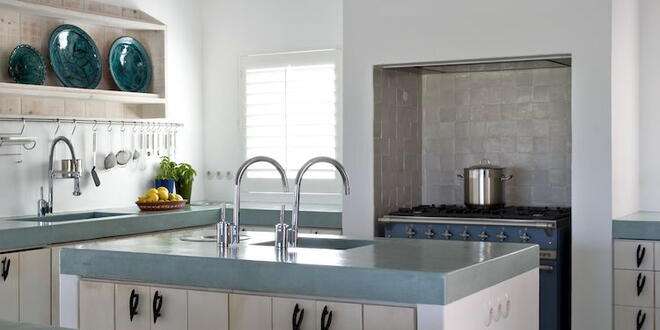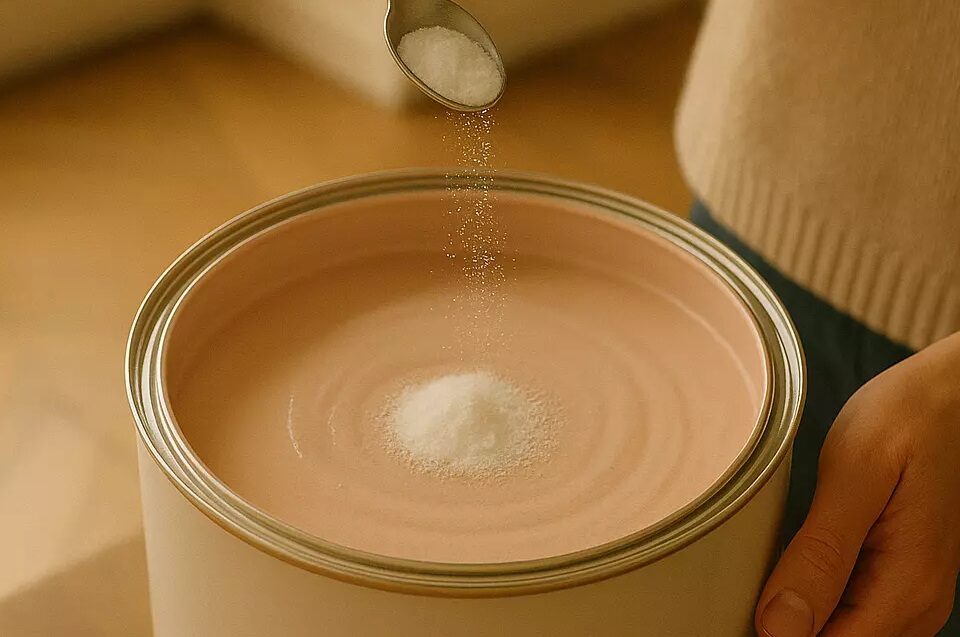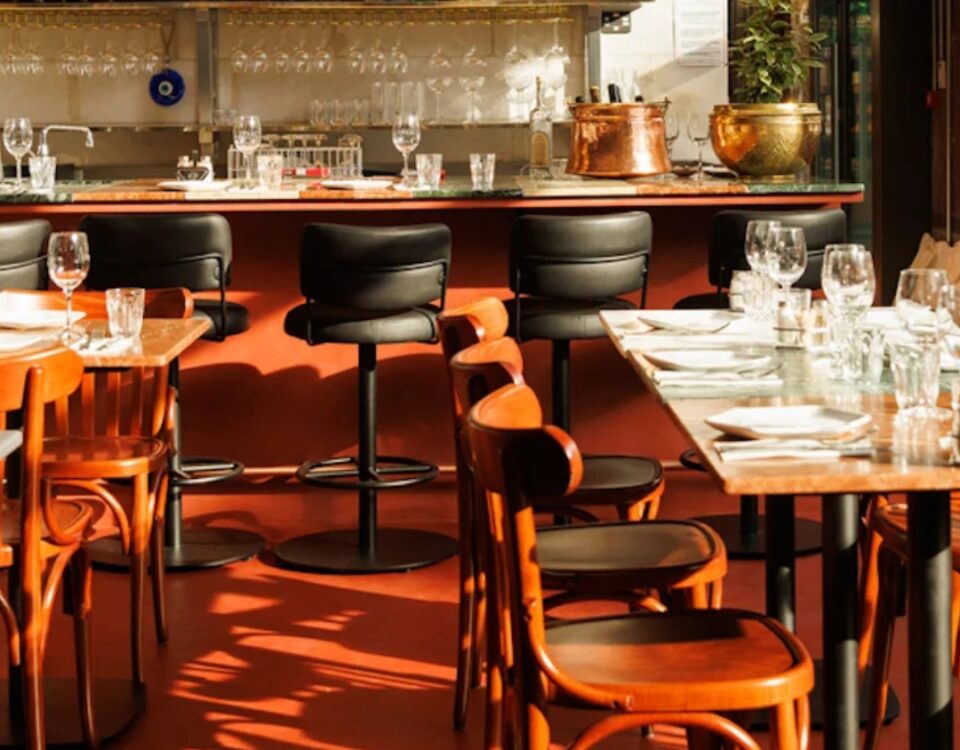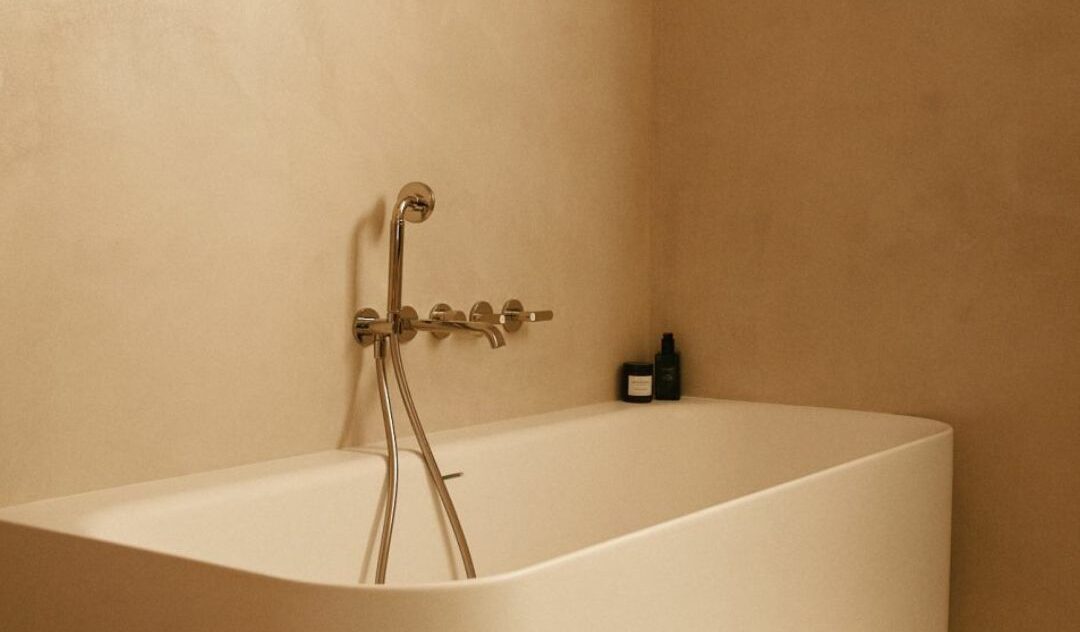Knowing how to use color is essential in home design.
Color has the power to transform volumes and create atmosphere. It can be used, for example, to delimit spaces or unite them. From then on, choosing and tuning it becomes a real art.
Marius Aurenti micro concretes offer a palette of 71 mineral colors of micro concretes for home interiors and exteriors.
This palette is part of the IRIS color chart, which comprises 146 colors and allows micro concrete, lime and paint to be combined in subtle combinations.
It is the fruit of over 20 years’ experience in coloring and collaborations with leading architects and decorators.
Take inspiration from MA’s photo gallery and the various sections of the site to feel the colors that appeal to you.
Then, thanks to MA’s color chart and its organized construction of color, you can find harmonies, in opposition or in cameos.
How to choose the right color for micro concrete?
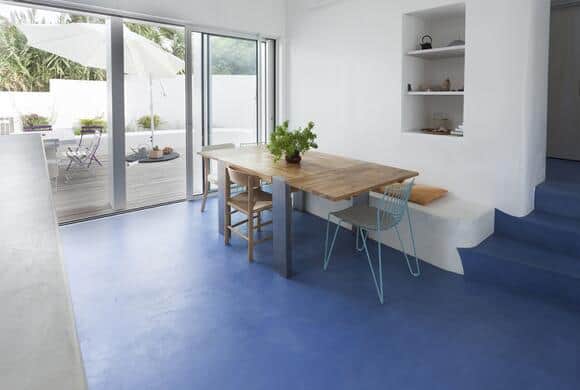
Color choices in interior design are often influenced by seasonal trends, which, while tempting, are rarely sustainable.
The dark, broken or muted colors of autumn and winter invite us to rest, to the harmony of a home that warms up to promote well-being with oneself and others, in complete intimacy.
Bright colors are more sunny, opening up the home and life in general to the outside world. The atmosphere is more dynamic, life resurfaces, movement accelerates.
Whether in the plant or animal world, this seasonal rhythm evokes for us a way of seeing life, our relationship with ourselves and with others.
These dynamic colors evoke childhood. They are often used in public places.
Because they are the result of real choices, bright colors add character to a living space.
A blue micro concrete floor is therefore perfect in a summery, seaside environment.
Pastels are halfway between spring and autumnal softness, and are perfectly suited to the new life of a child’s bedroom, for example, or a room where it’s nice to spend time reading or relaxing.
Over the past twenty years, interior design has developed considerably, and the range of colors available in paint, plaster and micro concrete has multiplied. Sometimes there are so many colors to choose from, it’s hard to choose.
The Marius Aurenti color chart has been designed with professionals to offer you real choices and play on the subtlety of materials and their nuances.
Matte, satin or gloss micro concrete?
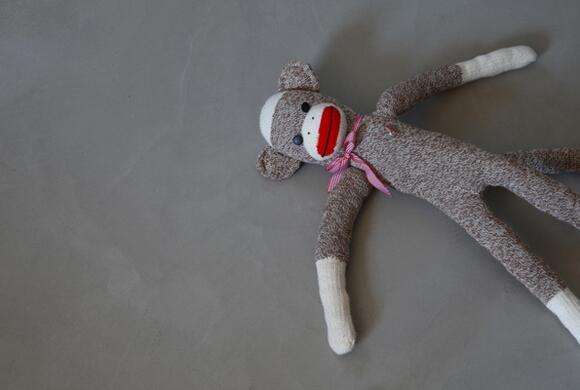
The choice of material also depends on whether it has a matte, satin or gloss finish.
In fact, color is also enhanced by its various finishes.
In matte, satin or gloss, micro concrete offers a completely different look.
In today’s trends, matte and satin are the most common finishes. The matte finish adds depth and recalls the raw material.
The silky matte or satin finish provides a surface finish. It is also often associated with areas subject to constraints (water, kitchen, etc.) to facilitate maintenance.
For a very mineral look and on natural colors such as Everest, Karonga or Grège micro concrete, the matte finish is the most appropriate.
Gloss finishes are similar to lacquers. They are suitable for red colors, which resemble the lacquer of Asian furniture, or for black to accentuate the play of light on the texture of micro concrete.
Can I change the color of my current micro concrete?

While the beauty of coloring concrete lies mainly in pigmentation in the mass, it is possible to change the color of old micro concrete by applying the MA’s range of coloredmineral glazes.
This matt, mineral glaze has been used for many years on public works to homogenize concrete in poor condition, after formwork removal, additions, recesses…
In recent years, the extension of its use in decoration has made it an extraordinarily deep and versatile color solution.
It can be applied to MA’s micro concretes (Fine Smoothing Mortar and Self-Smoothing Mortar), but also to levelling compounds and screeds (if traffic-compatible), or concrete slabs.
It can be used, for example, to renovate a terrace or bathroom floor with a raw, uncolored surface, or one that’s too stained or too dark.
Which color of micro concrete for a floor?
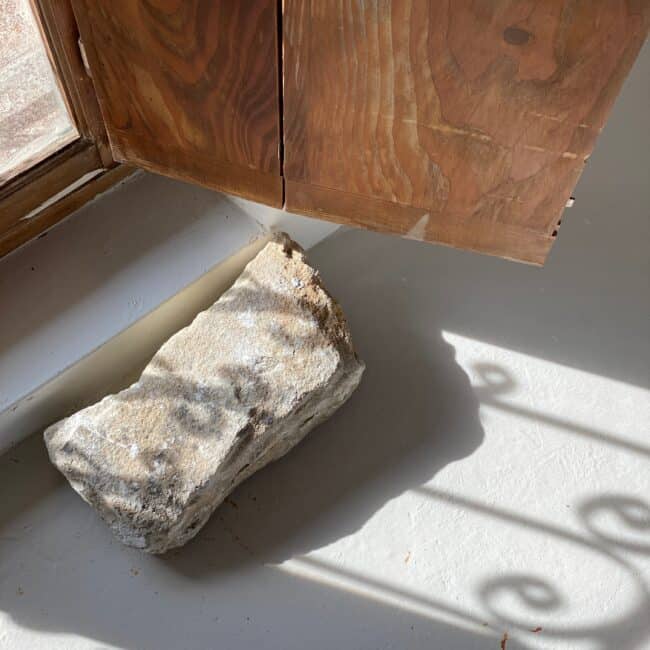
On the floor, micro concrete has the advantage of enlarging space thanks to its application without expansion joints.
It can create connections between different rooms in the house: kitchen and living room, bedroom and bathroom, living room and staircase, terrace…
Marius Aurenti micro concrete gives you a continuous floor, and that’s one of its greatest assets.
This link between spaces is accentuated by the choice of micro concrete colors.
Some interior designers use no more than three colors in any one room. They choose a base color for furniture or floors, a second for walls, and a third for decorative elements.
Others recommend combining 2 colors, one light and one dark, in the same monochrome.
MA’s micro concrete allows you to create these delicate harmonies with, for example, Voile, Poivre Blanc, gris Perle and Flanelle colored micro concretes.
Where to apply coloured micro concrete in the kitchen?
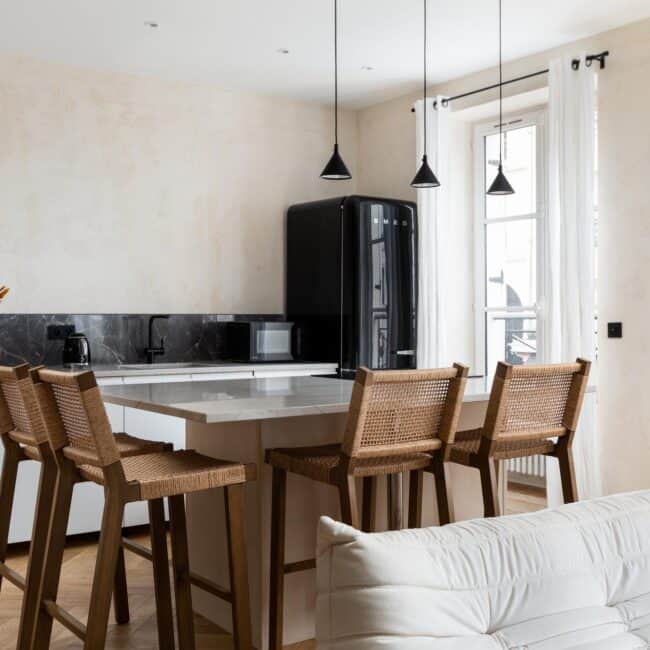
In a space like the kitchen, colored micro concrete is ideal for floors, walls, credenzas, worktops, sinks and furniture. It will dress all these surfaces to give them the best resistance to stains and shocks thanks to its high-performance protection systems.
Of course, as with any natural, porous material, care must be taken to protect and maintain it, because when it comes to materials, nothing is absolute in terms of resistance.
Micro concrete blends perfectly with other materials. In the kitchen, it complements wood, metal and tiles, which can be “integrated” into the space dedicated to micro concrete. For example, it can set off a beautiful mosaic frieze or unfinished wooden shelves.
As part of a renovation project, it can cover an old tiled worktop with new micro concrete to just 2 mm without changing the existing layout of the elements.
What color of micro concrete to choose?
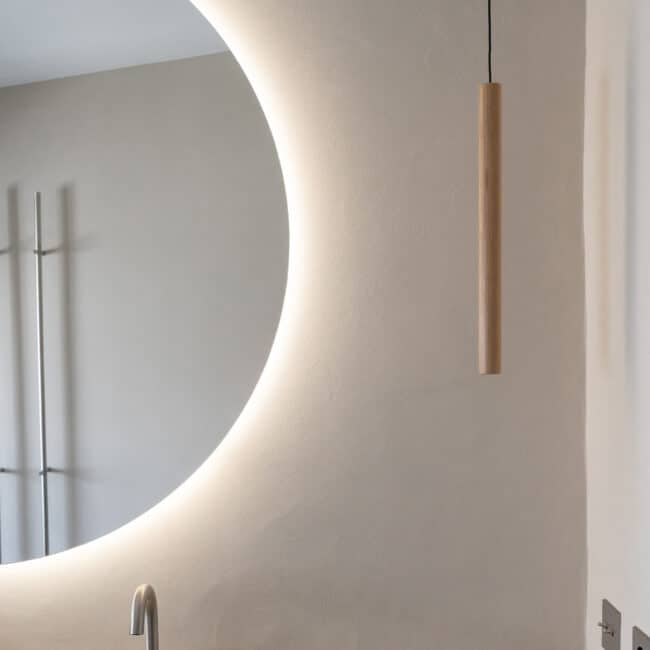
Long considered a primarily utilitarian room, the bathroom has now found its place in the world of interior design.
Water is a source of relaxation, the room a source of well-being and self-care.
Micro concrete has naturally found its place here, first and foremost from a sensory point of view. The warm, soft feel of MA’s micro concrete is inimitable.
From an aesthetic point of view, it creates continuous, seamless surfaces.
From a technical point of view, in this wet room, colored micro concrete can be applied to all surfaces: floor, basin and vanity unit, wall, walk-in shower. It can be applied to new or renovated tiles.
Grey micro concrete
Gray is very much in vogue in many interior design styles, and steals the show from white.
Grey and black, the so-called achromatic colors, are worn by industrial and Zen-style decorations. For works that will last for decades, they have the advantage of being timeless and timeless.
Concrete greys are often the most classic. Silver, Mouse and even darker grays like Platinium or Aberdeen add elegance and are easy to match with furniture or wall colors, as they remain neutral and very standard.
Zen style
Discreet, well-hidden storage spaces in a sleek, monochromatic furniture ensemble, Zen style is one of the most sought-after in contemporary interior design.
This trend is perfectly suited to Marius Aurenti micro concrete, which comes in a wide range of subtle shades of gray.
Choose from light colors such as Perle gray micro concrete, Souris gray micro concrete, Voile or Flanelle… and darker, deeper grays: Aberdeen, Platinium, etc.
Industrial style
In the 90s, it was the use of former industrial sites that enabled concrete to find a place of choice in lofts. Concrete gray, the key color of this decorative style, is available in the Marius Aurenti concrete range.
Concrete, metal, untreated wood, brick… The “indus” style gives pride of place to monochromatic hues and different shades of gray, from light gray micro concrete shades like Gris Cendré, through medium grays like Argent or Etain, to the darkest colors with Platinium dark gray micro concrete.
White micro concrete
Marius Aurenti’s color chart includes Everest white concrete.
White illuminates and enlarges a room by reflecting light. In the application of micro concrete, this sensation is reinforced by the uniformity of the material.
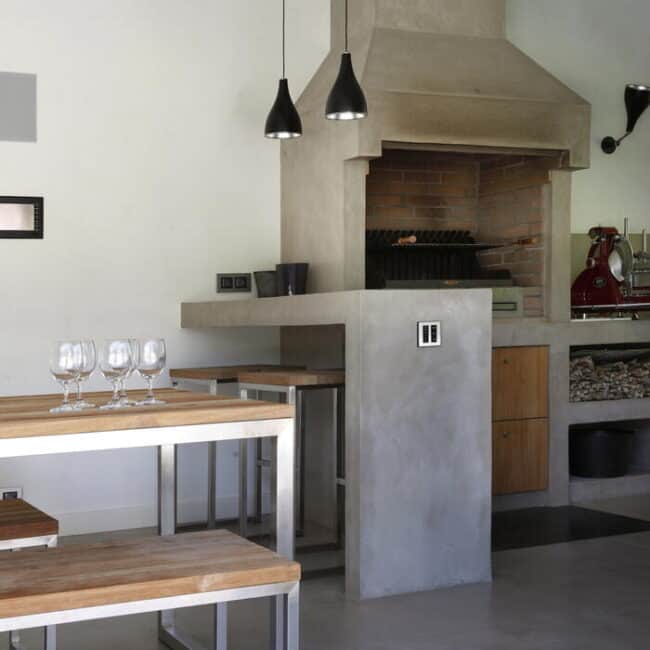
Scandinavian style
White micro concrete blends perfectly with Scandinavian-style interior design. Beauty of line, simplicity, blond wood and pastel hues: the Scandinavian style has been making a strong comeback in interior design over the last fifteen years, seducing with its refined, uncluttered air.
In the Marius Aurenti color chart, all the light shades of micro concrete are perfect for this style, with a preference for Thyme, Lead grey, Voile for a broken white and Sofia and Grège for beiges.
Another advantage of white is that it matches all the other colors in the range.
Classic and timeless, white micro concrete is ideal for living rooms, bathrooms, kitchens and outdoor spaces.

Off-white
To warm up the sometimes cold appearance of pure white, the Marius Aurenti color chart offers a palette of off-white or ivory micro concrete colors, such as Linen or Parchment micro concrete.
“Is white micro concrete messy?”
For white micro concrete, the finishing treatment – wax or varnish– plays an essential role, both in terms of protection and aesthetics.
The top coat ensures the durability and easy maintenance of your decorative material. MA’s high-performance varnishes are extremely stain-resistant, and particularly recommended for intensive use (kitchens, bathrooms, stores, restaurants).
So, whatever the color of your decorative plaster, on the floor, table or worktop, if it’s protected by a good finish, it won’t get dirty.
As with clothing and cars, very light and very dark colors such as white or black are more noticeable, especially in the dust.
MA’s therefore recommends intermediate colors and tones for concrete floors in living rooms opening directly onto a garden.
Beige micro concrete
Shades of beige micro concrete bring softness and intimacy to a living room.
Combined with blond wood furniture, cushions and rugs, this color will create a serene atmosphere in a bedroom, powder room or living room.
On kitchen walls, cream-colored micro concrete brings charm and authenticity. In a bathroom, pebble-colored micro concrete will express all its minerality.
Gray beiges bring a perfect blend of timeless chic and warmth. Sofia and Grège are the perfect representatives of these trends.
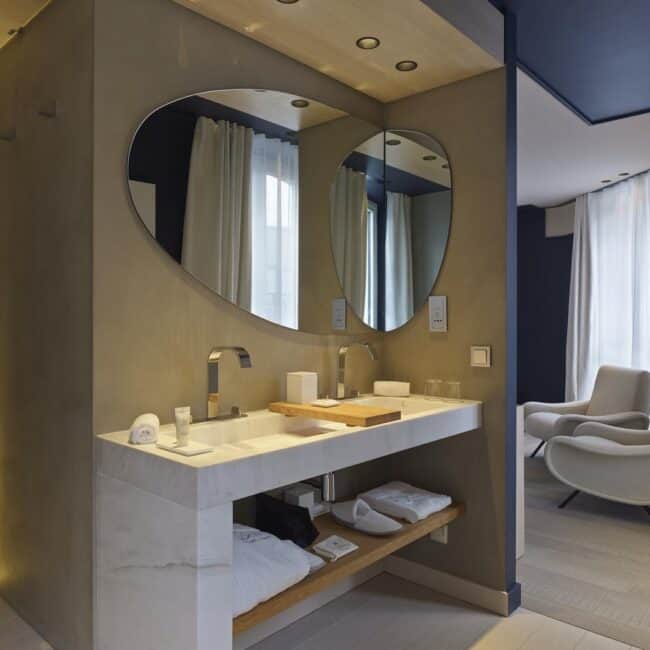
Country chic and mountain style
With storage units sometimes absent or embedded in the walls, a stone ambience or lime walls, micro concrete can be light and discreet or more present with dark beiges or browns (Terre naturelle, Ombre, Gibraltar).
The pretty shades of Nutmeg, Karonga and Capuccino add a touch of originality, while retaining the warmth and sobriety of a country-style interior.
With more antique furniture, often in dark wood, you’ll need to modernize the warm colors to avoid a rustic atmosphere.
We can then turn to a light gray micro concrete, such as Cendré gray or Voile or Perle gray, which carries a little more warmth.
Black micro concrete
Although black is a neutral color, it’s a good idea to use it in small touches only, and enhance it to bring out its cheerfulness.
Used sparingly, black lends intensity and character to a room.
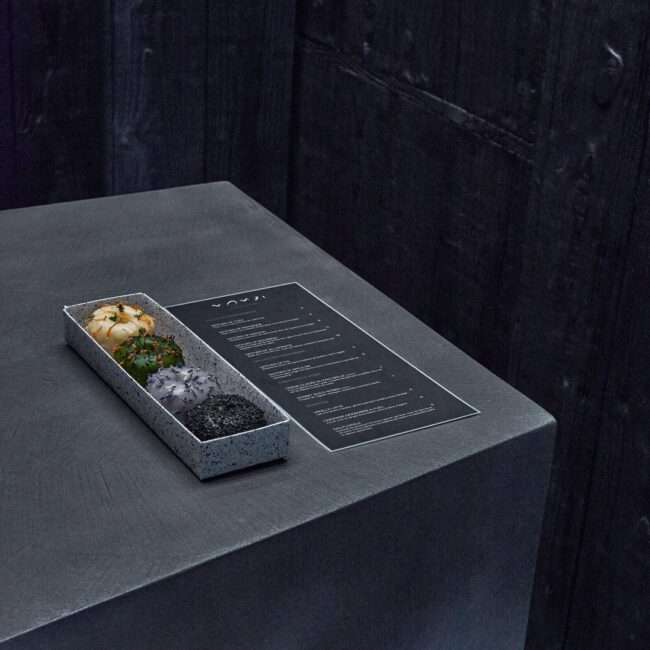
Marius Aurenti’s Ardoise black micro concrete is ideal for an industrial or Zen-style decor.
In a modern kitchen, it will dress up a worktop or credenza. Pair with Souris grey and Everest white for a monochrome urban style that allows for all manner of fantasy in terms of furnishings and decorative elements.
Black is the sum of all colors, giving intensity and elegance. It’s Chanel’s color in fashion, and the hue that reveals the material through a precious play with light.
Beyond color, Pierre Soulages turned it into a material in its own right in what he called ” l’outre-noir “.
The use of Marius Aurenti’s black Ardoise in micro concrete is particularly interesting in this architectural play of vibrating materials.
Black is therefore chosen first and foremost to emphasize an architectural and graphic element such as a staircase, fireplace, kitchen sink, bathroom basin, worktop, tabletop…
Black is then chosen to emphasize the texture and effects of the micro concrete. It plays with light to highlight the textures created by the artisanal application of micro concrete.
Blue micro concrete
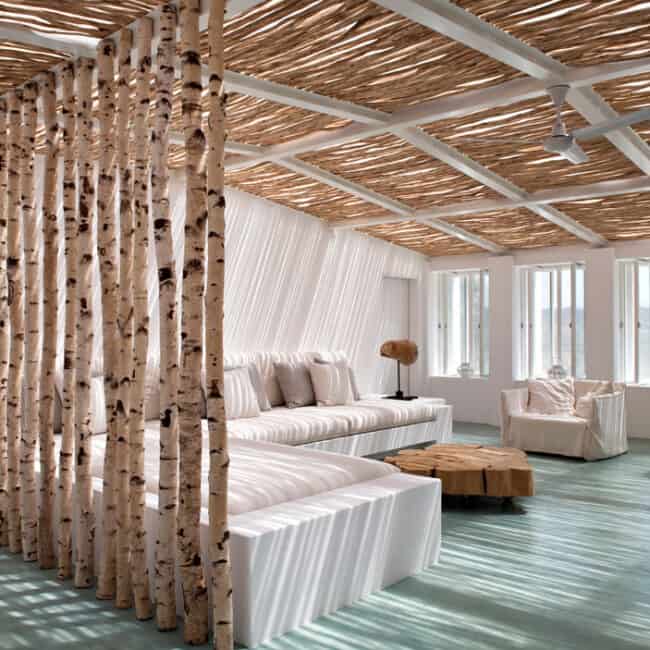
Combined with white, ultramarine blue evokes Greece, the Mediterranean and the light of the South.
It’s not a cold blue that dulls ambiences, it’s an extremely lively blue that majestically occupies space.
In the Marius Aurenti color chart, blues complement each other: Marne bleue, Stratus, Colette and Oxydium can be combined to create beautiful shades with a vacation feel.
Fans of blue-gray micro concrete will be seduced by Malachite or Oxydium.
Brown micro concrete
Matières Marius Aurenti offers a beautiful harmony of colors in brown hues.
Terracotta, Terre naturelle, Brun and Terre de Sienne micro concretes bring a feeling of comfort and reassurance.
Combined with another neutral color, brown blends into any decor. It can easily be enhanced with brighter colors tending towards pink or yellow.
Red micro concrete
Red blends well with materials such as blond wood, wicker and formica to create a warm, original atmosphere.
Marius Aurenti’s red micro concrete, applied to walls or floors, is adorned with deep, authentic hues. It plays on natural reds with the warm shades Hacienda, Riviera or Terre d’Argile.
Whether in a small room or a loft, red will bring cheerfulness and intimacy to your interior.
Reds are also used in oriental and Mediterranean decorations, and the depth of MA’s pigments gives lime or concrete a timeless, extremely warm look.
Colored concrete for exteriors and garages
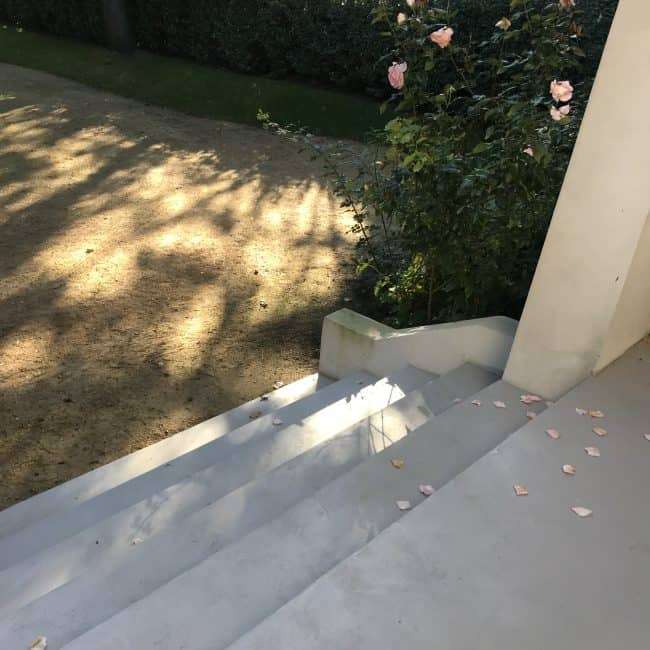
Marius Aurenti colored concrete isn’t just for indoor use. It can also be used outdoors, where its U.V. resistance ensures long-lasting color.
Your terrace, driveway, outdoor kitchen or garage can be finished in the same shades as the interior of your home.
With its very mineral hues and natural tones, colored concrete blends easily into an outdoor setting. On a low wall, a floor, a pool deck, a facade or a pond, it finds its natural place.
Outdoors, a white micro concrete such as Everest takes on its full dimension in a pool house, embellished with greenery or brightened by the reflections of a pond. The perfectly reflected light on the wall can even be accentuated by the white glazes on the surface.
In sun-exposed countries, light colors, especially white, are used to reflect the sun and enhance interior comfort.
On low walls, terraces or driveways, natural, mineral shades such as Sofia, Corde or Mélisse blend into the landscape and develop a beautiful patina without fading.


